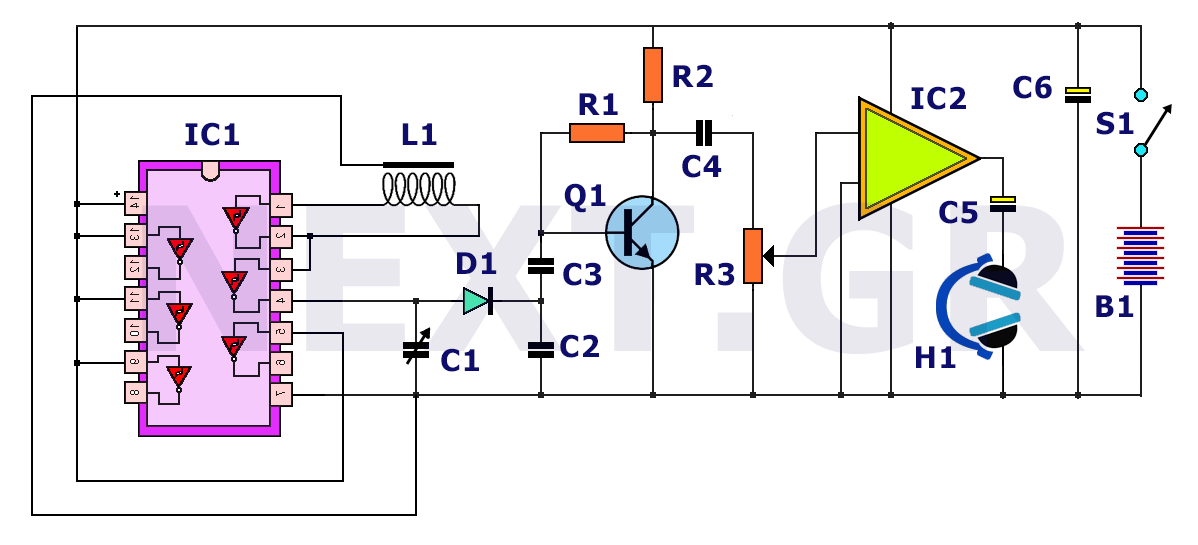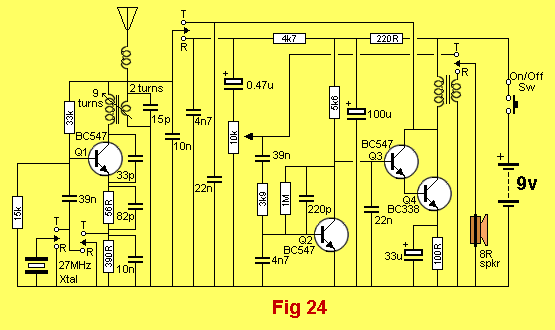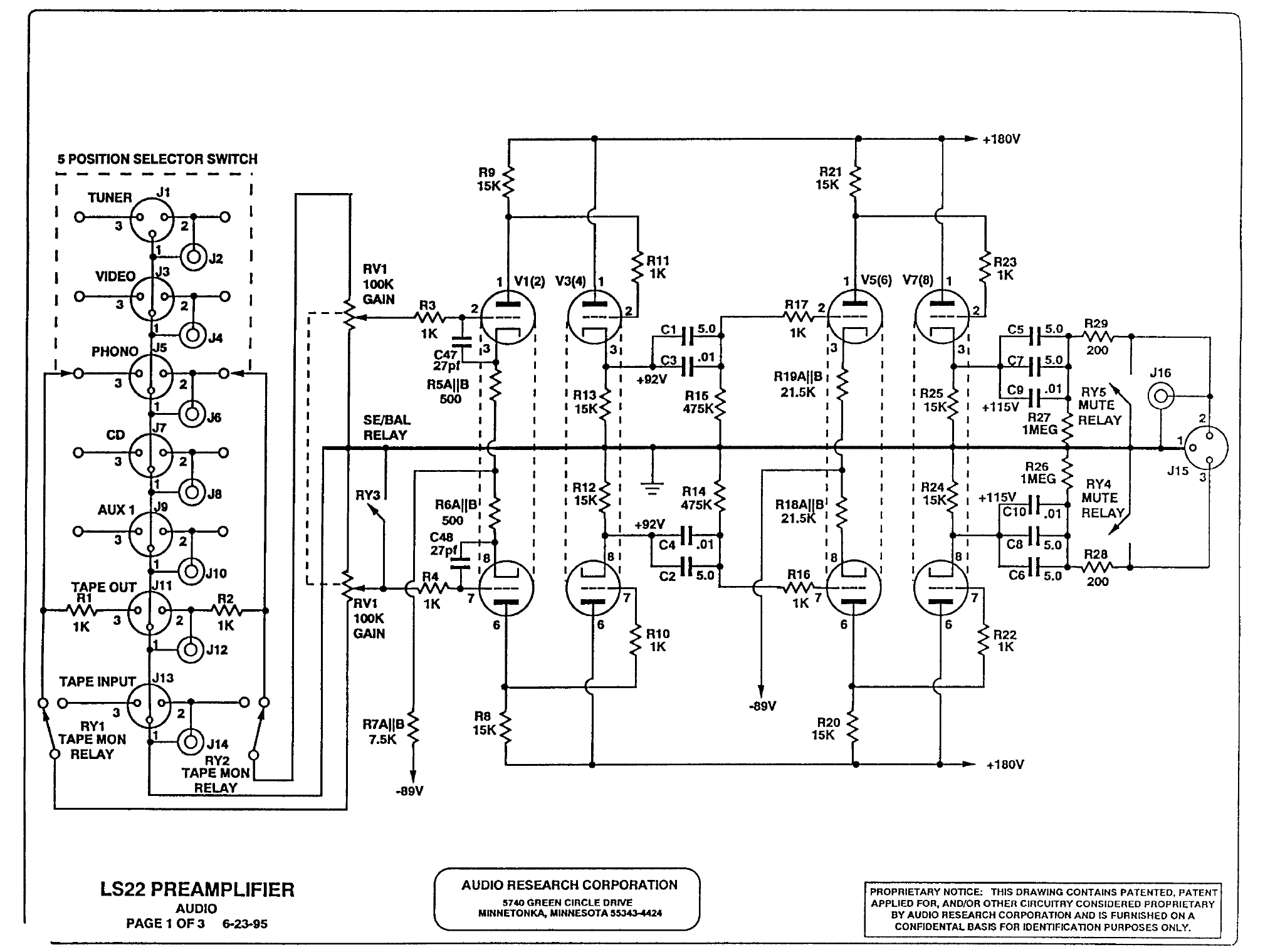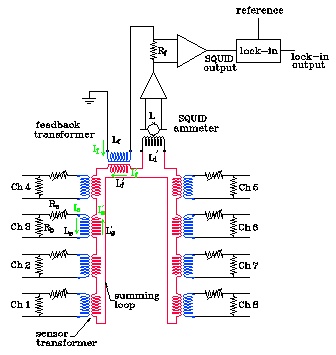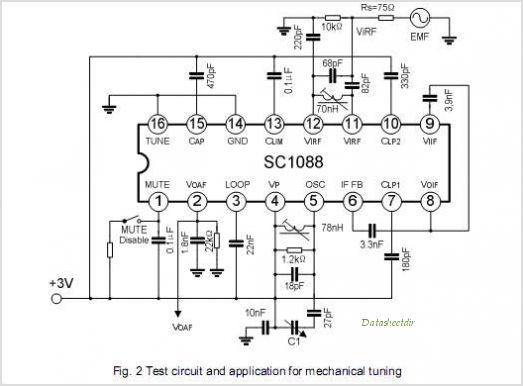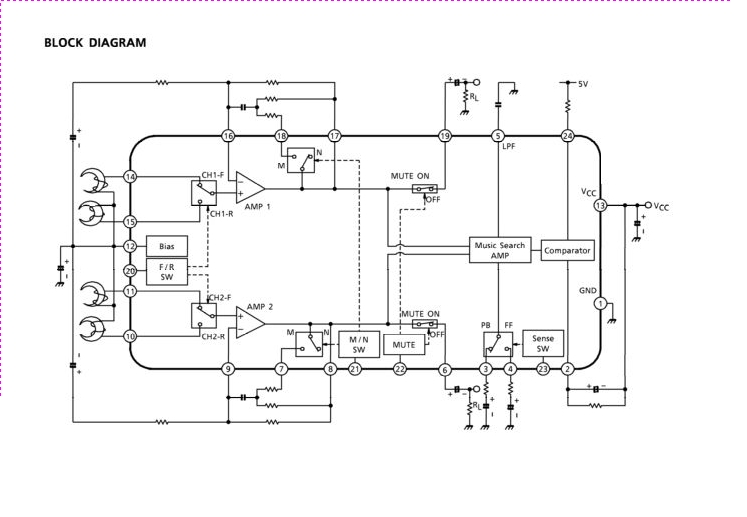
Search for Varicaps
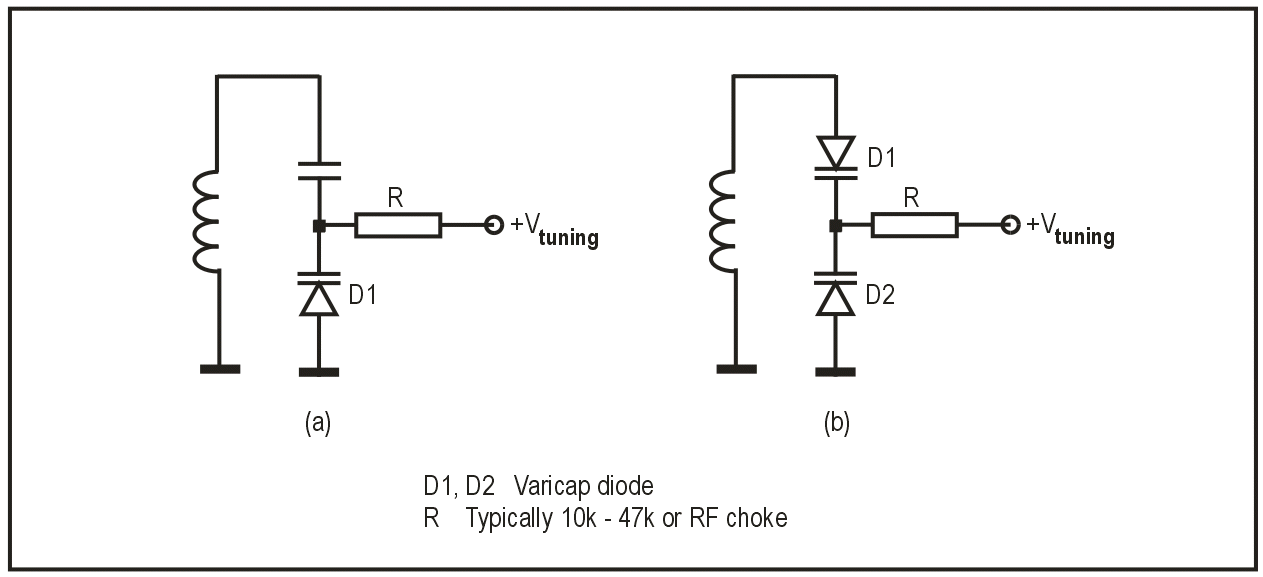
An 80m (3.5 - 3.9 MHz) SSB transceiver utilizes a Collins 455 kHz mechanical filter in the intermediate frequency (IF) chain. Such designs require effective front-end receiver selectivity, typically achieved through the inclusion of at least two selective tuned circuits. Additionally, there is an intention to construct a simple transistor voltage-controlled oscillator (VCO) for the transceiver. This design necessitates three tracking tuned circuits: two in the preselector filter preceding the mixer and one in the oscillator. A straightforward approach involves using a three-gang variable capacitor. Historically, suitable parts could be readily sourced from local suppliers, often accompanied by a 10:1 reduction vernier drive. In more recent years, a set of appropriate varicap diodes would have been the preferred choice. A common selection for high-frequency (HF) band designs has been the Philips BB212, with three such high-capacitance varicaps being ideal for this transceiver. However, these varicap diodes have been in short supply for over three years. Varicap (variable capacitance) diodes function by applying a reverse bias voltage to the P-N junction of the diode. As the reverse bias voltage increases, the depletion layer at the P-N junction expands. In standard silicon diodes, a voltage of approximately 0.6V is needed to allow current to flow across the depletion layer, resulting in a voltage drop across a conducting diode. In reverse-biased varicaps, minimal current flows, creating an insulating layer between two conducting silicon layers, which widens with increasing reverse bias voltage. This characteristic allows the device to function as a voltage-variable capacitor. Varicaps can also be manufactured with a hyperabrupt junction, which enhances the effect through specific doping of the P-N junction. Capacitance can vary across a ratio of 2.5:1 within the specified voltage range for standard varicaps and can exceed 10:1 for hyperabrupt devices. Typical capacitance values for VHF and UHF varicaps range from 1 to 50 pF, while HF varicaps span from 50 pF to 500 pF. Two common circuit configurations exist: a single varicap diode arrangement and a dual varicap diode configuration, which offers practical benefits by preventing RF voltages from causing diode conduction, albeit at the cost of halving the available capacitance. To mitigate inductance effects from device leads and reduce oscillator noise, some designs utilize multiple paired varicaps in parallel. While low-capacitance varicaps for VHF and UHF applications remain relatively accessible, high-capacitance varicaps for HF and AM band designs are increasingly rare. The Philips BB212 dual varicap diodes have become nearly unobtainable, with occasional availability at prohibitively high prices. Alternatives include Toko's KV1500 series, On-Semi's MV series, and devices from Zetex, though these components are often not available at local suppliers, if such stores still exist. Moreover, many current options are produced in small surface mount device (SMD) packages, complicating procurement unless bulk purchasing is feasible.
The outlined schematic for the 80m SSB transceiver incorporates several critical components and configurations. The use of a Collins 455 kHz mechanical filter in the IF chain ensures high selectivity and performance in the desired frequency range. The transceiver's front-end design features two selective tuned circuits, which are essential for filtering out unwanted signals and enhancing reception quality. These tuned circuits are strategically placed in the preselector filter, which is connected to the mixer, ensuring that only the desired frequency components are processed.
The integration of a simple transistor VCO is pivotal for frequency generation. This oscillator design relies on the three tracking tuned circuits, which maintain frequency stability and accuracy across the operational range. The three-gang variable capacitor is a critical component in this arrangement, allowing for fine-tuning of the oscillator frequency. This capacitor, if sourced correctly, would enable the adjustment of the resonant frequency of the tuned circuits in response to changes in the applied reverse bias voltage.
Varicap diodes are incorporated into the circuit to provide the variable capacitance needed for the tuning process. The choice of varicaps is crucial, as their capacitance characteristics directly influence the performance of the oscillator and tuned circuits. The dual varicap configuration offers benefits in terms of RF voltage management while also introducing a limitation in capacitance, which must be considered in the overall design.
The circuit layout must minimize inductance and noise, particularly in the oscillator section, where multiple paired varicaps may be employed to achieve the desired performance. The design must also account for the physical constraints of component sizes, especially with the increasing prevalence of SMD packages, which may complicate assembly and integration into the transceiver chassis.
In summary, the 80m SSB transceiver design presents a sophisticated approach to amateur radio communication, balancing component selection, circuit configuration, and performance optimization to achieve effective operation within the specified frequency range.A 80m (3. 5 - 3. 9 MHz) SSB transceiver using a Collins 455 kHz mechanical filter in the IF chain. Such designs need some good front-end receiver selectivity in the form of at least a couple of selective tuned circuits. I`m also planning to build a simple transistor VFO for the transceiver. This design approach requires three tracking tuned circuits - two in the preselector filter ahead of the mixer, and one in the oscillator. The simple approach calls for a three gang variable capacitor. Thirty years ago, you could visit a local parts supplier and purchase a suitable part, probably along with a nice 10:1 reduction vernier drive. More recently, say ten years ago, I would have simply bought a set of suitable varicap diodes. A common choice for HF band designs was the excellent Philips BB212. Three such high capacitance varicaps would be ideal for my transceiver. Guess what component has been on my rare and endangered` components list for more than three years Varicap (i.
e. variable capacitance) diodes operate using a reverse bias voltage applied to the P-N junction of the diode. As this reverse bias voltage increases, the depletion layer at the P-N diode junction widens. With normal operation of a silicon diode, it will take about 0. 6V to force electrons across this depletion layer, the reason for the this voltage drop across a conducting diode.
In the case of a reverse biased varicap, since minimal current can flow in a good reverse biased diode, the result is an insulating layer between two conducting silicon layers. This layer widens with increasing reverse bias voltage. The result is a device which can be used as a voltage variable capacitor. Varicap diodes are also produced with a hyperabrupt` junction in which the P-N junction is doped to enhance this effect.
Capacitance can readily range across a 2. 5:1 ratio across the specified voltage range in a standard varicap, and up to 10:1 (and often beyond) for hyperabrupt devices. Typical VHF and UHF varicaps range from 1 to 50 pF while HF varicaps range from 50 pF to 500 pF. Two common circuit arrangements are used. Figure 1 (a) shows the arrangement for a single varicap diode while Figure 1 (b) shows the more common dual varicap diode configuration.
This latter arrangement has some practical benefits, ensuring RF voltages across the tuned circuit will not cause the diodes to conduct, but it does reduce the available capacitance by a factor of two. To reduce inductance effects of device leads, and to reduce oscillator noise, some designs also feature multiple paired varicaps in parallel.
While low capacitance varicaps for VHF and UHF circuits are still reasonably easy to find, high capacitance varicaps for HF and AM band designs are as rare as unicorn`s tusks. Those wonderful Philips BB212 dual varicap diodes appear to have become nigh on unobtainable. A few can occasionally be found, but at a price to make your head spin. Well, mine, at least. Other alternatives exist Toko make some nice varicaps in the KV1500 series, On-Semi (previously known as Motorola) still make some of the MV series, while Zetex also make some useful devices too.
The problem is, you`re not likely to find anything like these down at your local parts supplier, assuming you`re lucky enough to still have such a store! If you could buy them, most now seem to be made only in eye-strainingly small surface mount device (SMD) packages.
The biggest problem Unless you`re up to buying a few thousand at a time, you may not be able to buy 🔗 External reference
The outlined schematic for the 80m SSB transceiver incorporates several critical components and configurations. The use of a Collins 455 kHz mechanical filter in the IF chain ensures high selectivity and performance in the desired frequency range. The transceiver's front-end design features two selective tuned circuits, which are essential for filtering out unwanted signals and enhancing reception quality. These tuned circuits are strategically placed in the preselector filter, which is connected to the mixer, ensuring that only the desired frequency components are processed.
The integration of a simple transistor VCO is pivotal for frequency generation. This oscillator design relies on the three tracking tuned circuits, which maintain frequency stability and accuracy across the operational range. The three-gang variable capacitor is a critical component in this arrangement, allowing for fine-tuning of the oscillator frequency. This capacitor, if sourced correctly, would enable the adjustment of the resonant frequency of the tuned circuits in response to changes in the applied reverse bias voltage.
Varicap diodes are incorporated into the circuit to provide the variable capacitance needed for the tuning process. The choice of varicaps is crucial, as their capacitance characteristics directly influence the performance of the oscillator and tuned circuits. The dual varicap configuration offers benefits in terms of RF voltage management while also introducing a limitation in capacitance, which must be considered in the overall design.
The circuit layout must minimize inductance and noise, particularly in the oscillator section, where multiple paired varicaps may be employed to achieve the desired performance. The design must also account for the physical constraints of component sizes, especially with the increasing prevalence of SMD packages, which may complicate assembly and integration into the transceiver chassis.
In summary, the 80m SSB transceiver design presents a sophisticated approach to amateur radio communication, balancing component selection, circuit configuration, and performance optimization to achieve effective operation within the specified frequency range.A 80m (3. 5 - 3. 9 MHz) SSB transceiver using a Collins 455 kHz mechanical filter in the IF chain. Such designs need some good front-end receiver selectivity in the form of at least a couple of selective tuned circuits. I`m also planning to build a simple transistor VFO for the transceiver. This design approach requires three tracking tuned circuits - two in the preselector filter ahead of the mixer, and one in the oscillator. The simple approach calls for a three gang variable capacitor. Thirty years ago, you could visit a local parts supplier and purchase a suitable part, probably along with a nice 10:1 reduction vernier drive. More recently, say ten years ago, I would have simply bought a set of suitable varicap diodes. A common choice for HF band designs was the excellent Philips BB212. Three such high capacitance varicaps would be ideal for my transceiver. Guess what component has been on my rare and endangered` components list for more than three years Varicap (i.
e. variable capacitance) diodes operate using a reverse bias voltage applied to the P-N junction of the diode. As this reverse bias voltage increases, the depletion layer at the P-N diode junction widens. With normal operation of a silicon diode, it will take about 0. 6V to force electrons across this depletion layer, the reason for the this voltage drop across a conducting diode.
In the case of a reverse biased varicap, since minimal current can flow in a good reverse biased diode, the result is an insulating layer between two conducting silicon layers. This layer widens with increasing reverse bias voltage. The result is a device which can be used as a voltage variable capacitor. Varicap diodes are also produced with a hyperabrupt` junction in which the P-N junction is doped to enhance this effect.
Capacitance can readily range across a 2. 5:1 ratio across the specified voltage range in a standard varicap, and up to 10:1 (and often beyond) for hyperabrupt devices. Typical VHF and UHF varicaps range from 1 to 50 pF while HF varicaps range from 50 pF to 500 pF. Two common circuit arrangements are used. Figure 1 (a) shows the arrangement for a single varicap diode while Figure 1 (b) shows the more common dual varicap diode configuration.
This latter arrangement has some practical benefits, ensuring RF voltages across the tuned circuit will not cause the diodes to conduct, but it does reduce the available capacitance by a factor of two. To reduce inductance effects of device leads, and to reduce oscillator noise, some designs also feature multiple paired varicaps in parallel.
While low capacitance varicaps for VHF and UHF circuits are still reasonably easy to find, high capacitance varicaps for HF and AM band designs are as rare as unicorn`s tusks. Those wonderful Philips BB212 dual varicap diodes appear to have become nigh on unobtainable. A few can occasionally be found, but at a price to make your head spin. Well, mine, at least. Other alternatives exist Toko make some nice varicaps in the KV1500 series, On-Semi (previously known as Motorola) still make some of the MV series, while Zetex also make some useful devices too.
The problem is, you`re not likely to find anything like these down at your local parts supplier, assuming you`re lucky enough to still have such a store! If you could buy them, most now seem to be made only in eye-strainingly small surface mount device (SMD) packages.
The biggest problem Unless you`re up to buying a few thousand at a time, you may not be able to buy 🔗 External reference
